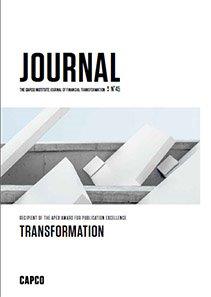The failure of Lehman Brothers uncovered a shocking fact that after six decades of automation there are no global standards for the identity of financial market participants nor their financial products. Bankruptcy attorneys and forensic accountants tried to understand Lehman’s exposure to others and others’ exposure to Lehman. There was no consistency in identifying Lehman as a counterparty; no understanding of what relationships Lehman had with others; and no mechanism to associate all of Lehman’s products and businesses into a holistic view of the exposure others had to Lehman should it fail. In effect, no one, be they regulators, creditors, or counterparties, could see into Lehman’s exposure to risk.
This paper illuminates a fundamental component of the financial system that goes largely unrecognized as a key pillar of finance, non-standardized financial transaction data. Financial transactions lack unique, universal, and unambiguous identifying codes for the supply chain of financial market participants and the products they manufacture, issue, own, process, and trade. Imagine if every supermarket had a different barcode for the same product on its shelves or a different code for the producer or supplier of the product. Walmart, FedEx, and Amazon could not exist. This failure has exasperated researchers, analysts, financial institutions, and regulators, who are forced to map and scrub this data before aggregating financial transactions for performance, risk, and regulatory reporting. Considerable risks, costs, and delays in receiving payment are also inherent in this reconciliation process.
This paper explores the history, status, issues, work yet to be done, and recommendation by the author to create financial industry identity standards. The “barcodes of finance” will enable an automated means to aggregate risk data so that firms can reduce risk and costs, and regulators can oversee the largest systemically important global financial firms.
This paper illuminates a fundamental component of the financial system that goes largely unrecognized as a key pillar of finance, non-standardized financial transaction data. Financial transactions lack unique, universal, and unambiguous identifying codes for the supply chain of financial market participants and the products they manufacture, issue, own, process, and trade. Imagine if every supermarket had a different barcode for the same product on its shelves or a different code for the producer or supplier of the product. Walmart, FedEx, and Amazon could not exist. This failure has exasperated researchers, analysts, financial institutions, and regulators, who are forced to map and scrub this data before aggregating financial transactions for performance, risk, and regulatory reporting. Considerable risks, costs, and delays in receiving payment are also inherent in this reconciliation process.
This paper explores the history, status, issues, work yet to be done, and recommendation by the author to create financial industry identity standards. The “barcodes of finance” will enable an automated means to aggregate risk data so that firms can reduce risk and costs, and regulators can oversee the largest systemically important global financial firms.
